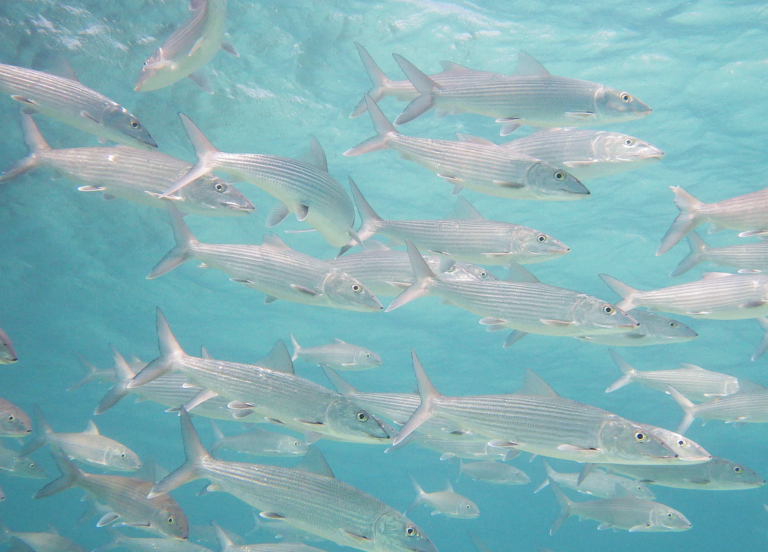Bonefish and Tarpon Connectivity – A Case for Regional Conservation
Different governments have different regulations regarding clean water, healthy habitat and fish harvest. Yet fish don’t recognize international boundaries, and move freely throughout their geographic range as they have for eons. This has been confirmed by BTT research that shows how bonefish, tarpon and permit populations are connected.
Our research has shown that bonefish populations are connected throughout the Caribbean, Bahamas, and Florida Keys. Bonefish spawn offshore at night. The larvae that hatch from the eggs live in the ocean for between 41 and 71 days, and are caught in currents that loop them back to region where they were spawned, or to locations hundreds of miles away. For example, we know that some of the bonefish in the Florida Keys were spawned in Belize, Mexico, or southwest Cuba. Bonefish populations in the Caribbean are similarly connected.
BTT research has shown similar connectivity and mobility for tarpon populations. When tarpon spawn offshore, the larvae that hatch from the eggs float in the ocean for about a month and can be dispersed widely; larvae from tarpon spawning in the Gulf of Mexico might end up along Florida’s west coast, in the Everglades, or even on Florida’s east coast. BTT’s Tarpon Acoustic Tagging Project has shown how mobile adult tarpon are, tracking fish seasonally migrating between Florida, South Carolina, North Carolina, and as far north as the Chesapeake Bay. Tarpon have also been tracked moving from the Florida Keys to the northern Gulf of Mexico.
Early BTT research also suggests that permit populations are connected. Permit spawn at reef mounts or artificial reefs, and their larvae are in the open ocean for about three weeks. During this time, just like bonefish larvae, they might be transported to juvenile habitats nearby or hundreds of miles away.
The connectivity of fish populations underscores the importance of region-wide conservation strategies. Protecting habitat and water quality near home is not enough; habitat loss, water pollution, and harvest in one location can impact fish populations in other areas.




